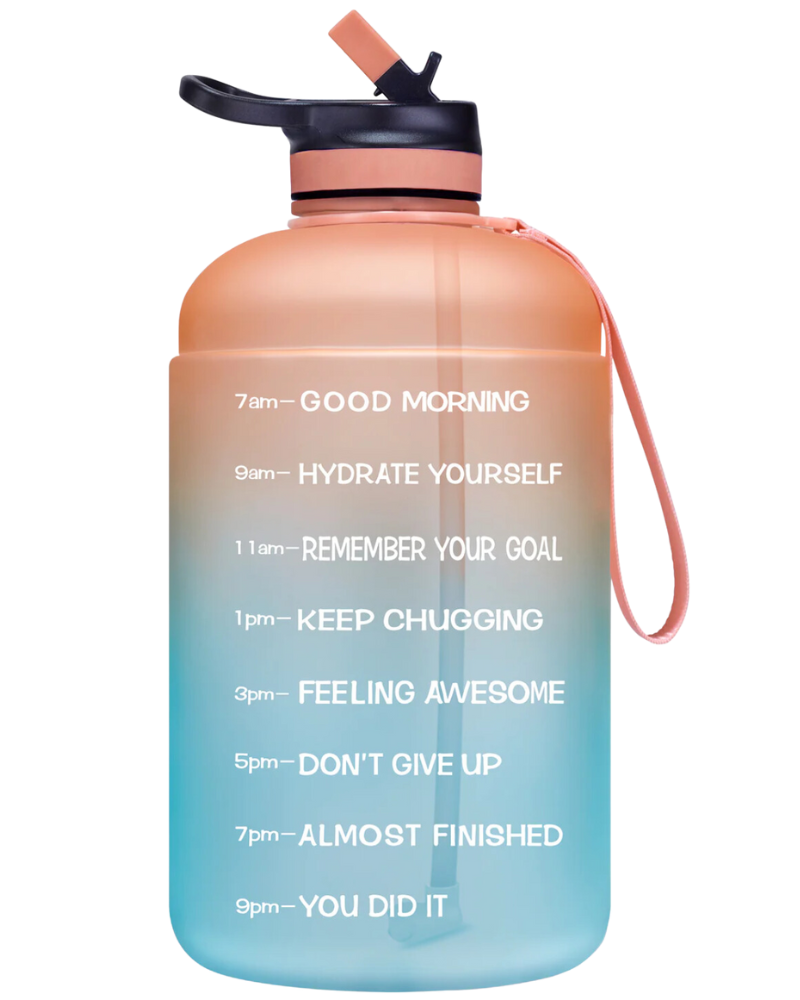5 Summer Hydration Tips
Summer is the perfect time to enjoy outdoor activities and soak up the sun. However, with the hot weather comes an increased risk of dehydration, which can lead to a host of negative health effects. To help you stay healthy and hydrated this summer, Dr. Katherine Reardon, physical therapist, has compiled a list of 5 tips for summer hydration. From drinking enough water to eating hydrating foods, these tips will help you maintain proper hydration levels and enjoy all that summer has to offer.
Carry a water bottle with you.
Carrying a water bottle with you ensures that you always have access to water, which is essential for maintaining proper bodily functions and preventing dehydration. Dehydration can lead to a number of negative health effects, including unclear thinking, mood changes, overheating, constipation, and kidney stones. When you have a water bottle with you, you can easily sip on water throughout the day, which can help you maintain proper hydration levels and prevent these negative effects.
In addition, carrying a water bottle with you can help you avoid sugary drinks and other unhealthy beverages, which can contribute to dehydration and other health issues. By having a water bottle on hand, you can make it easier to choose water over other less healthy options.
Overall, carrying a water bottle with you is a simple yet effective way to stay hydrated and promote good health.
2. Use Reminders To Drink On A Schedule
This super fancy Smart Water Bottle from HidrateSpark comes with a LED smart sensor “puck” that glows to remind you when it’s time to drink and tracks your water intake by syncing via Bluetooth to the HidrateSpark App.
It’s easy to get caught up in your busy day and forget to drink water. There are some fun water bottles, like the one pictured above, that can help you stay on track, and even some techy choices, as seen here!
When you have a set schedule for drinking water, you are less likely to forget to drink water or to become dehydrated[1].
Furthermore, drinking water on a schedule can help you establish healthy habits, which can lead to long-term health benefits. For example, staying hydrated can help regulate body temperature, maintain blood pressure, and support healthy kidney function[2].
In addition, drinking water on a schedule can help you avoid overhydration, which can be harmful to your health. When you drink too much water, your body's electrolyte balance can become disrupted, which can lead to symptoms such as nausea, headaches, and confusion.
Overall, drinking water on a schedule is an effective way to stay hydrated and promote good health.
3. Add A Dash Of Fruit Or Citrus To Your Water
If you're bored with the taste of your water, try mixing it up by adding a little fruit juice or other healthy liquid to your water bottle. You can also use different containers to make drinking from your bottle more fun: put ice cubes in one; fill it with fresh fruit or herbs; swap out for a new color cup every day. Infuser water bottles can also help jazz up your water.
Simply make drinking water an activity that's shared with friends and family--this will encourage everyone involved to stay hydrated all summer long!
4. Incorporate Electrolytes Such as Sodium and Potassium
Sodium is important for maintaining water balance in your body, while potassium helps regulate blood sugar levels. You can find both of these electrolytes in foods like potatoes, bananas, and avocados--all of which are great sources of nutrition during the summer months!
5. Eat Water-Rich Fruits and Vegetables
Water-rich fruits and vegetables are a great way to keep your body hydrated. The fiber and electrolytes in these foods help you feel fuller longer, so they can be a good alternative to sugary snacks when you're craving something sweet.
Watermelon is 92% water (and also contains vitamins A, B6 and C). It's easy to see why this popular summer fruit is considered one of the best hydrating foods!
Broccoli contains 80% water--a lot more than most other veggies or fruits you might think of as being "high in water content." The rest of its makeup includes vitamins A, C and K; folate; potassium; iron; calcium; magnesium; phosphorus...the list goes on!
Katherine was born and raised in California and graduated from the University of the Pacific in 2019 with her doctorate in physical therapy. She previously attended California State University Stanislaus, where she graduated Summa Cum Laude with her Bachelor of Arts in Kinesiology with a concentration in Health and Wellness Promotion. Since obtaining her DPT, Katherine has worked as a physical therapist in both outpatient and inpatient settings, where she developed a passion for adult orthopedic conditions and post-operative rehabilitation. She has also discovered a love of mentoring PT and PTA students and is an APTA-credentialed clinical instructor.
After getting married in 2021, Katherine moved from California to Vermont with her husband and joined the Living Well team that December. In her free time, Katherine enjoys spending time with her husband and Bengal cat Zombo.
Get more healthy tips.
Want to get more great advice from our physical therapists and chiropractors? Sign up below to join our email list.





